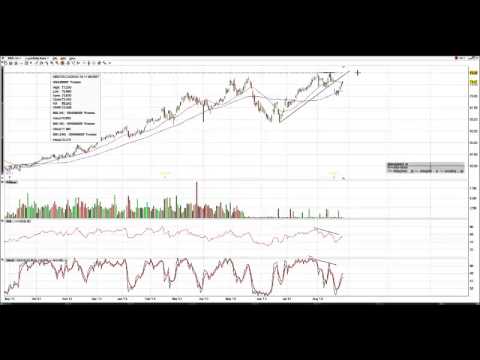
To calculate operating income, you take a company’s total revenue and subtract its total operating expenses. Operating income is also sometimes referred to as « operating profit » or « operating earnings. » The cost of manufacturing the candy during the period was $39,500, leaving a gross income of $35,500. The company’s operating expenses came to $12,500, resulting in operating income of $23,000. Then ABYZ subtracted $1,500 in interest expense and added $1,700 in interest income, yielding a net income before taxes of $23,200. Once federal, state, and local taxes of $7,500 were subtracted, ABYZ Candy was left with a net income of $15,700.

Net income is also used to calculate other metrics such as net profit margin and operating cash flow. Banks consider net income when approving a business loan application, as do investors when deciding whether to invest in a company. Companies use net income to calculate earnings per share (EPS), a widely used profitability metric, to report to shareholders, VCs and other investors. It’s profit that can be distributed to business owners or invested in business growth.
Company
It’s separated on the statement from other income, such as investment earnings. That way anyone reading the income statement can see how much income your business activities earn and whether your business is profitable. That information is important not only to you but also to lenders and investors. Lumping money from investments in with operating income would muddy the image. Net operating income (NOI) is a fundamental real estate valuation method for real estate investors. NOI helps you calculate an investment property’s potential real estate revenue.
Investors use cap rates to compare the returns of different properties. Yarilet Perez is an experienced multimedia journalist and fact-checker with a Master of Science in Journalism. She has worked in multiple cities covering breaking news, politics, education, and more. Charlene Rhinehart is a CPA , CFE, chair of an Illinois CPA Society committee, and has a degree in accounting and finance from DePaul University. In 2023, the first $17,000 of gifts to any person are excluded from tax, up from $16,000. The exclusion is increased to $175,000 from $164,000 for gifts to spouses who are not citizens of the United States.

Capital expenditures, such as costs for a new air-conditioning system for the entire building, are not included in the calculation. Operating income is also important because it shows the revenue and cost of running a company without non-operating income or expenses, such as taxes, interest expenses, and interest income. Operating income helps investors to determine if a management team is running the company properly and allows for comparison to other similar companies within the same industry.
Operating income vs Net income: What’s the Difference?
NOI is used to determine the capitalization rate of a property, also known as the return on investment (ROI) in real estate. Also, EBIT strips out the cost of debt (or interest expense), which is deducted from revenue to arrive at net income. By adding back interest expense to net income to arrive at EBIT, we can see net income without the cost of debt.
Tabula Rasa HealthCare Reports Second Quarter 2023 Financial … – PR Newswire
Tabula Rasa HealthCare Reports Second Quarter 2023 Financial ….
Posted: Mon, 07 Aug 2023 11:02:00 GMT [source]
The term “operating income” is often used interchangeably with earnings before interest and taxes (EBIT), but there are differences between the two profit metrics. Both measure profit from net sales after deducting operating expenses, including depreciation and amortization. But EBIT also includes non-operating revenue and expenses, while operating income does not. EBITDA is similar to EBIT but excludes depreciation and amortization expenses.
Net income vs. operating income
Managers, investors and lenders all use operating income as a key measure of business health. It’s a good measure of how well the company’s underlying business is performing, since it covers both the direct and indirect costs of creating and selling products and services. Net operating income is used to calculate the capitalization rate, a measure of the profitability of an investment property in relation to the total cost.
In each case, an investor examining the businesses with no consideration other than net income might come away making the wrong call about the long-term prospects and cost the company money. So, although net income is a key factor to consider when examining potential investments, it’s also important to keep it in the broader context of the complete business. Net income is also referred to as net profit, net earnings, net income after taxes (NIAT) and the bottom line—because it appears at the bottom of the income statement. A negative net income—when expenses exceed revenue—is called a net loss. Conversely, net income is revenue minus all expenses, including operating expenses and nonoperating expenses, such as taxes.
What Is the Formula for Calculating Operating Margin?
The Net Operating Income is your revenue through daily sales of operating your business. Direct costs are expenses specifically related to the cost of producing goods and services—things like parts, raw materials, utility bills, direct labor, and commissions or professional fees. Indirect costs are expenses that aren’t directly related to manufacturing or buying goods for resale. Examples include salaries and benefits, factory equipment (depreciation and maintenance), rent, and certain utilities.
- These expenses include the cost of producing goods, operating expenses, non-operating expenses, and taxes, all of which are subtracted from a company’s total revenue to arrive at net income.
- By adding back interest expense to net income to arrive at EBIT, we can see net income without the cost of debt.
- Therefore, you can use NOI and the cap rate to determine if rental properties are a sound investment and what your annual return will be.
- A key difference is that a company’s operating income focuses on the core operations form of a business, whereas net income determines overall profitability.
Operating income is a company’s profit after deducting operating expenses which are the costs of running the day-to-day operations. Operating income, which is synonymous with operating profit, allows analysts and investors to drill down to see a company’s operating performance by stripping out interest and taxes. Net operating income (NOI) is a commonly used figure net income vs operating income to assess the profitability of a property. The calculation involves subtracting all operating expenses on the property from all the revenue generated from the property. The higher the revenues and the smaller the expenses, the more profitable a property is. This tells the owner if the income generated from owning and maintaining the property is worth the cost.
To calculate net operating income, subtract operating expenses from the revenue generated by a property. Revenue from real estate includes rental income, parking fees, service changes, vending machines, laundry machines, and so on. To calculate operating income, you start with a company’s gross profit. From there, you subtract operating expenses, which include things like selling, general, and administrative (SG&A) expenses.
RingCentral Announces Second Quarter 2023 Results – Business Wire
RingCentral Announces Second Quarter 2023 Results.
Posted: Mon, 07 Aug 2023 20:03:00 GMT [source]
Operating income shows the income generated from a company’s operations. EBIT is essentially net income with interest and tax expenses added back to establish a company’s overall profitability by excluding the cost of debt and taxes. However, EBIT includes interest income and other income, while operating income does not. Operating income is the profit generated by the company’s core business operations, after expenses are subtracted.
A company’s income statement will also show its net income before taxes, which can be helpful when comparing businesses in states that have different tax rates. Companies must factor in a number of expenses to run a business, and sometimes these costs exceed revenues, resulting in lower operating income and profit. When a company has healthy revenues and operating income, this results in stronger operating margins. However, what is considered a strong operating margin often varies across different industries. Operating income is a measurement that shows how profitable a company’s core business operations are.
Technically, net sales refer to revenue minus any returns of purchased merchandise.
Guide to Understanding Accounts Receivable Days (A/R Days)
It can be compared to the entire value of the property if that property had been paid fully in cash. In this case, the higher the net operating income to property price percentage, the better. Earnings before interest and taxes (EBIT) is a company’s net income before interest and income tax expenses have been deducted. EBIT is often considered synonymous with operating income, although there are exceptions.
- This tells the owner if the income generated from owning and maintaining the property is worth the cost.
- Net profit margin, another profitability ratio, is calculated by dividing net income by total revenue.
- Operating income only takes care of revenue generated and the cost of operations.
- Most real estate professionals and investors agree that margins and operating incomes should be above 15% of the investment cost.
- Operating income is also important because it’s one of the key inputs in the calculation of a company’s operating margin.
Operating revenue is revenue earned from a business’s main activities, whether selling goods or services. For example, a bakery’s operating revenue comes from selling baked goods. An electrician’s operating revenue comes from providing electrical services. Apple’s revenue comes from iPhones, iMacs, and other devices and services sold by the company.
With NetSuite, you go live in a predictable timeframe — smart, stepped implementations begin with sales and span the entire customer lifecycle, so there’s continuity from sales to services to support. As an example of the latter, consider a scenario where an apartment owner waives a tenant’s yearly $12,000 rent, in exchange for that renter acting as a property manager. In 2023, the 28 percent AMT rate applies to excess AMTI of $220,700 for all taxpayers ($110,350 for married couples filing separate returns). Join BiggerPockets and get access to real estate investing tips, market updates, and exclusive email content.
Positive cash flow means the business can pay routine expenses and meet short-term financial obligations. Non-operating income includes items such as interest income, dividend income, and gains (or losses) from the sale of assets. To accurately calculate operating income, it’s important, first, to accurately categorize all revenue and expenses. Nonoperating revenue and costs should be excluded from the calculation.



